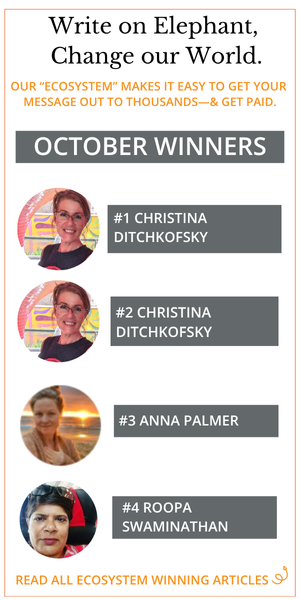When we were first married, my husband would tease me about my seeming lack of spontaneity.
He even promised to buy me a T-shirt that read, “Sure, I’m spontaneous! Just tell me when and where!”
I thought it was funny and fair, too, because, by and large, I am not a spontaneous person. I like my days and schedules prepared in advance. It is hard for me to reschedule an appointment even when circumstances suggest that I do.
I’m rarely late to any meeting, no matter how casual. I would never “drop in” on someone and would not like it done to me. (Obviously, it would never be a good idea to throw me a surprise party.)
I’ve studied the inner workings of myself as intensely as I’ve studied anything in my life.
My obsession with studying myself began in my early 20s when I first heard about the Meyers-Briggs test. After that door opened, I took any and every personality test I could get my hands on from the mainstream world and, eventually, the New Age world as well.
I explored the depths of my astrological chart through both Western and Vedic traditions. I delved into the inner workings of my Ayurvedic body type, otherwise known as my Dosha. I studied my Enneagram, my top 10 strengths via the StrengthsFinders test, and still receive numerology and astrology reports annually to help guide my decision-making. (They’re great for satisfying the planner/organizer in me!)
These tests have helped me refine my sense of self and, as a consequence, develop self-compassion and patience for who I am and the way I move through life. For instance, I no longer force myself into a decision too early as I might’ve done before I understood how my mind works. I can simply state my needs with clarity and confidence and without defensiveness or guilt.
And, once I realized that my personality tendency is toward planning and organization, I was no longer annoyed by the teasing that I was not spontaneous.
Because I know that a personality test doesn’t mean I can’t ever be spontaneous. Just like my “introvert” designation doesn’t mean that I am not occasionally the life of the party or the last one to leave it.
Because I can be, and sometimes, I am.
Personality tests can be insightful tools and companions in our growth journey. They can free us to be more fully and non-apologetically ourselves. But, if depended on too heavily, they confine and contain our behavior. The tool becomes the trapping.
They limit us and our relationships when we:
>> use them as excuses or defenses to avoid new ways of approaching our life, our work, and our relationships
>> use them to justify our behavior
>> use them as a shortcut or road map to getting to know someone else
>> use them to explain another’s behavior
Just because we’ve seen an oak tree does not mean we know each and every oak tree. The same is true with personality types.
Personality tests only point to our tendencies. They do not acknowledge our potentials—although said potentials are clearly written on the backside of all of our tendencies. By that, I mean: while our tendency might lean toward logical and left-brained decision making, our potential is to open into our creative, right-brained, intuitive sides. This is true of every personality type.
If we get stuck in and attached to a personality designation, we are likely to repeat its patterns over and over. Then, it becomes a self-fulfilling prophecy where we’ve convinced ourselves these patterns are our one and only truth. There is a difference between being someone who does not enjoy large crowds and someone who cannot be in a large crowd. This is where the label becomes a cross to bear rather than a tool to free us.
Our personality type is not our destiny. It is not our “always,” and it is certainly not our “never.”
Lately, I’ve moved from studying personality tests to working with and studying archetypes.
An archetype (“arche” = original/origin; “type” = model/pattern) is an expression of a particular kind of energy we all recognize when we hear it. We use the language of archetypes all the time, even if we don’t realize it. For example, we might refer to people as Geniuses, Bullys, Artists, Seekers, Gossips, Heroes, Nurturers, and so on.
Archetypes are ingrained personality patterns stamped in us from birth. But that’s all they are—patterns, potentialities, and probabilities. They are neither fixed nor absolute. They can be updated, refined, and even upended.
For us to continue growing and expanding, we must do more than just embody them. We must adapt and evolve through them during our lifetime.
According to Caroline Myss, the author of the book Sacred Contracts, every human being has 12 archetypes, but we all share the same core four archetypes: the Victim, the Child, the Prostitute, and the Saboteur.
Imagine if we simply claimed these four archetypes and acted on their impulses without question or challenge. We would constantly be sabotaging ourselves, seeing ourselves as victims, viewing the world through the eyes of our inner child, and prostituting (selling ourselves short) every single day.
But most of us find ways to outwit our saboteur through positive self-talk, counseling, healing, and support groups. We nourish and feed our inner child so that our mature adult can step forward. We create boundaries, reclaim our sovereignty, and, as we grow stronger, we take on shadow work so as not to get stuck in a victim mentality.
We recognize the tendencies and impulses of these archetypes, all the while working against the grain to make better, wiser choices for ourselves and others.
The point of understanding our archetypes, as with personality tests, is not to get lost in them but to dig into the shadow and the light of each of the labels and extract the lessons and growth.
Archetypes are not merely pointing to our inner workings; they’re pointing to how to move beyond them.
It’s our choice, however. We can stick to our inherent patterns, reinforcing them until it’s nearly impossible to imagine another way. Or, we can challenge the patterns and move to their highest potential.
For example: someone born with a Bully archetype can either remain a bully or learn to face their inner fears and then use their notable influence and power for good causes. A Clown can either use their humor to hurt others or to bring levity where needed.
Just as these “negative” archetypes have light side potential, “positive” archetypes have a shadow side that can sneak up on us. It might seem, for instance, that the Teacher archetype is a beneficial and straightforward archetype until we note how sometimes the teacher can get so focused on teaching that they fail to embody the lessons for themselves.
And we all know the Athlete who pushes limits until they hurt their body.
Every archetype is like a pomegranate: open it up, and there are all kinds of seeds to savor and bit into.
We’re not meant to cozy into our personality type, zodiac sign, or whatever other labels we’ve assigned to ourselves or been told we are. We’re meant to push off of them.
Archetypes and personality types are not meant to hold or contain us. They reveal a tendency, not a promise.
And yet, we always expect the “funny” person to be cracking jokes. We don’t give space for them to be sad or withdrawn.
We expect the organized, thoughtful person to always have their sh*t together. We aren’t prepared for when they fly off the handle.
We expect the stoic person to handle any kind of loss with poise, even if it’s forced, and are confused when they break open.
A word of warning: trying out new ways of being, processing, and decision-making is going to confuse others. I’ll never forget when a business colleague said to me, “Keri, I never know what to expect from you. One day, you’re open and friendly, and the next, you’re touchy and closed-off.”
She wanted me to be reliable—not merely in what I did but in who I was. Not only that, but she was attempting to shame me for my head-scratching behavior (which only made me double down on wanting to be a head-scratcher).
Labeling ourselves and others is such a debilitating and unfair way to move through life together. We’re holding ourselves and each other back from our greatest potentials.
We are not programs that run on auto-pilot. We are designed for exploration and curiosity—and that includes exploration and curiosity about our own personality.
A human journey is about growing into our wholeness, not dividing ourselves into increasingly smaller pieces of pie. If we want to heal and connect, we need to be like the blueberries in that pie and bleed into each other, melt into each other, and then and only then can we understand each other.
I can and want to experience all ways of being and thinking. I have my tendencies, like all of us, but I try to move into and from all the open spaces of my mind and personality. (Perhaps there’s a personality test somewhere that would label someone who refuses to be labeled.)
My husband never did buy me that T-shirt about my lack of spontaneity.
Probably because, not long after his teasing, he dared me to make naked snow angels with him in the freshly fallen snow on our back deck.
He figured I wouldn’t do it. All of the odds pointed to me not doing something so impulsive and, well, cold. So when I threw off my clothes, ran outside, and dropped into the snow, he had no choice but to follow my lead.


 Share on bsky
Share on bsky





Read 34 comments and reply